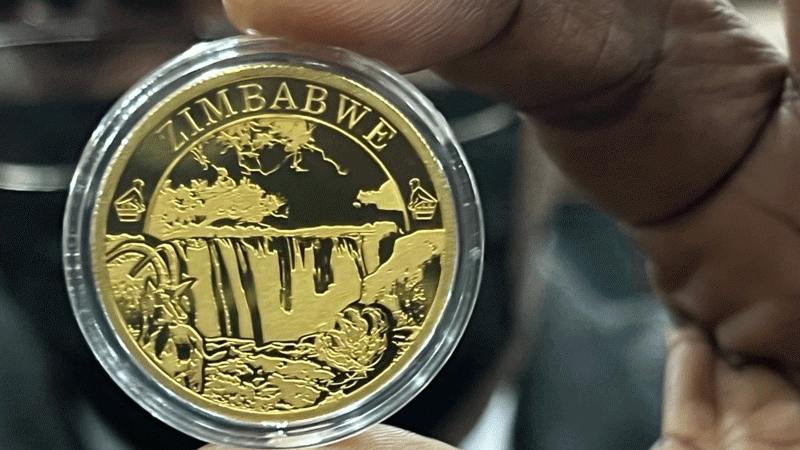
RECENTLY, the Reserve Bank of Zimbabwe (RBZ) announced its mid-term Monetary Policy Statement (MPS).
Here, the central bank outlines policy actions it will take in the second half of the year to fulfil its primary mandate of price, exchange rate, and financial sector stability. The proposed RBZ actions to achieve mandates are analysed below.
Benchmark policy rate
The RBZ has resolved to maintain its policy rate at 150%. According to the central bank, the exchange rate depreciation and inflation pressures experienced in May and June did not emanate from increased money supply due to borrowing for speculative purposes thus reflecting adverse behavioural factors.
Generally, central banks increase interest rates (cost of money) during periods of rising prices to discourage speculative borrowing in the economy.
With the sustainability of ongoing currency stability remaining questionable, maintaining a high policy rate is a good move that will continue to deter any speculative behaviour by economic agents.
However, it must be pointed out that the economy continues to gradually move toward full dollarisation as shown by the composition of banking sector deposits and loan book.
Foreign currency-denominated loans constituted 94% of the total banking sector’s loan book while foreign currency deposits constituted 81,51% of the total money supply as of June 2023.
- RBZ blocks Harare US dollar charges
- Industry cries foul over new export surrender requirements
- One stitch in time saves nine
- Banks keep NPLs in safe territory
Keep Reading
This surely undermines the impact of changing the benchmark policy rate at a time Zimbabwe dollar as a proportion of the total money supply is declining.
In addition, the Medium-Term Bank Accommodation (MTBA) for the productive sector was maintained at 75%. This MTBA must be aligned with the benchmark policy to eliminate arbitrage opportunities that cause distortions in the economy.
Deposit interest rate
In its February 2023 MPS, the Bank adjusted the minimum deposit interest rates on both Zimdollars and US dollars savings and time deposit accounts upwards.
This action was taken to help lure depositors to keep money aside for long-term goals while earning interest. Lucrative interest on deposits ensures that excess money held by the public is kept in the bank rather than being used for speculative purposes.
In other words, the higher the deposit interest rate the greater the opportunity cost of holding non-interest-bearing cash.
In its latest mid-term MPS, the central has decided to maintain interest rates on Zimdollars time and savings deposits at 30% and 50% per annum respectively.
However, these interest rates are unlikely to lure economic agents to bank their excess Zimdollars funds because they are largely lagging behind both the current inflation level hovering above 100% and the central bank’s expected inflation of between 60-70% by year-end.
The value that will be lost due to price growth is higher than the value that will be gained on interest-earning deposit accounts.
As such, there is no incentive for the public and investors to keep their extra money in such accounts in a hyperinflationary environment. They would rather chase value by investing their free funds in riskier assets like stocks or buying USDs in the parallel market.
Statutory reserve requirements
The Bank has maintained statutory reserve requirements levels on domestic and foreign currency demand and call deposits at 15% and 10% respectively.
The SRR is meant to build up adequate liquidity in the banking sector, a lack thereof creates a financial imbalance in case of an untoward incident like fraud which can lead to a risk of financial instability.
As such, SRRs are key in building trust and confidence in the banking sector as investors and the public get assurances that their money is secured through reserves.
More importantly, SRRs are used for liquidity management by the central bank where a high SRR ratio means a large portion of deposits is locked in RBZ’s vaults and therefore are not available for on-lending by banks thus constraining credit creation and expansion by commercial banks.
Generally, SRRs are mostly non-interest bearing. As such, a high SRR poses a high opportunity cost to banks, prevents full utilization of savings in the economy, and increases the cost of financial intermediation.
But for Zimbabwe which is trapped in a high inflationary environment, maintaining a high SRR, particularly on Zimdollars deposits is a good policy stance that reduces the amount available to banks for credit creation.
Foreign exchange management
The central bank has decided to maintain the current retail auction system in place and liberalise the use of foreign exchange from the wholesale auction system in order to allow banks to meet small foreign payment requirements for their customers such as individuals and small businesses.
This liberalisation of the use of funds is a commendable policy move that will help enhance financial inclusion in Zimbabwe.
However, it remains my view that authorities must disband the retail auction system so that the interbank emerges as the sole official source of forex for all economic agents. This fast-tracks unification of the exchange rate which is key in increasing pricing transparency, competition, and efficiency.
Open market operations (OMO)
The Bank resolved to strengthen the operation of the non-negotiable certificate of deposits (NNCDs) which are being used to mop excess local currency liquidity.
An NNCD is a record that contains an acknowledgment that a sum of money has been received by the issuer and a promise by the issuer to repay the sum of money.
NNCDs cannot be transferred, sold, bought, or exchanged. In the past, RBZ has been issuing NNCDs yielding zero interest, a move that was unfair to banks, who had to give up their excess funds for nothing at a time the local currency has been massively losing value.
As such, the decision now taken by RBZ to strengthen NNCDs as an OMO tool is welcome as it is expected to improve NNCD liquidity and increase gains for investors.
Gold coins, gold-backed digital
The gold coins were introduced by the central bank in July 2022 to serve two primary functions: liquidity management and alternative investment vehicle.
As of 14 July 2023, these coins have managed to mop over ZW$35 billion from a total of 36,059 coins. The central bank also introduced gold-backed digital tokens (GBDT) in May 2023 to complement the sale of physical gold coins and expand the value-preserving instruments available in the economy, enhance the divisibility of the investment instruments, and widen their access and usage by the public.
As of July 21 2023, the central bank had conducted 11 issuances of GBDT valued at ZW$50.50 billion and US$7,794.87, which are backed by 325,024,524 milligrammes (325.02 kgs) of gold. In its latest MPS, the central bank plans to undertake public awareness campaigns ahead of the eventual rolling out of GBDT for transactional purposes.
While these instruments have increased investment assets to rival the US dollar as a store of value, the opportunity cost posed by these to the economy is huge.
For instance, gold coins are largely sold in fragile Zimdollars, which is tantamount to selling precious gold at a discount. This occurs at a time the nation is facing dwindling reserves.
Reserves are crucial in economic management, especially during periods of speculative attacks on local currency, the balance of payment imbalances, and or unforeseen contingencies like climate-change-induced natural disasters.
Again, the issue of access to these instruments by the general public remains unsolved thereby risking the deepening of societal inequalities aided by the state apparatus. Also, with high perceived corruption in public institutions and a lack of trust in government, rolling out GBDT before setting up adequate infrastructure in place across the nation will expose the general public to predators like fraudsters and scammers.
More so, the GBDT dubbed “Zimbabwe gold” has its own exchange rate thus creating multiple exchange rates in the economy. Exchange rate multiplicity creates pricing distortions and promotes round-tripping.
Tobacco production financing
According to Statutory Instrument 64 of 2004, tobacco merchants, who fail to secure offshore financing to produce and buy back tobacco are required to apply to the central bank for authority to raise funds on the local market.
These restrictions have been constraining access to finance by tobacco farmers thereby negatively affecting the production of tobacco. Yet, tobacco is Zimbabwe’s top cash crop contributing on average about 10% to forex receipts per annum. Consequently, the RBZ has decided to remove all restrictions on the use of locally sourced funds with immediate effect.
This commendable move will positively affect the utilisation of land, national output growth, and generation of foreign currency, which is key in building reserves and stabilizing the macroeconomy.
Inflation projections
The central bank projects a downward trend of inflation rate in 2HY23, expecting monthly inflation to fall to 3% while yearly inflation will close the year between 60-70%. The Bank posits that staying the course of tight monetary policy (as shown by its latest monetary policy measures) to buttress already prevailing strong fundamentals (robust GDP growth, healthy Balance of Payments, improved foreign currency receipts, and fiscal sustainability) will lead to sustained macroeconomic stability.
However, the ongoing stability is managed and likely temporary because it has not come on the back of swift implementation of robust economic and political reforms. The Treasury is reportedly not fulfilling obligations to its contractors and service providers while the RBZ is mopping Zimdollars through the sale of forex.
The market starvation of the Zimdollars is affecting business activity and promoting the dollarization of the economy.
Also, the speculation is that these unfulfilled obligations by Treasury will be paid all at once soon after the election thereby ballooning Zimdollars liquidity, destabilizing the exchange rate, and causing another round of acute price increases. With growing reports also proving a rigged electoral system (delimitation scandals, opaque voters’ roll and polling stations, voter intimidation in rural areas, banning of opposition rallies, vote buying accusations, etc), Zimbabwe is likely heading toward a contested electoral result.
These may risk causing deadly post-election violence, plunge the country into pandemonium and exert negative impacts on the economy (humanitarian crisis, brain drain, high investment risk premium and sour international relations, etc).
- Sibanda is an economic analyst and researcher. He writes in his personal capacity. — [email protected] or Twitter: @bravon96











